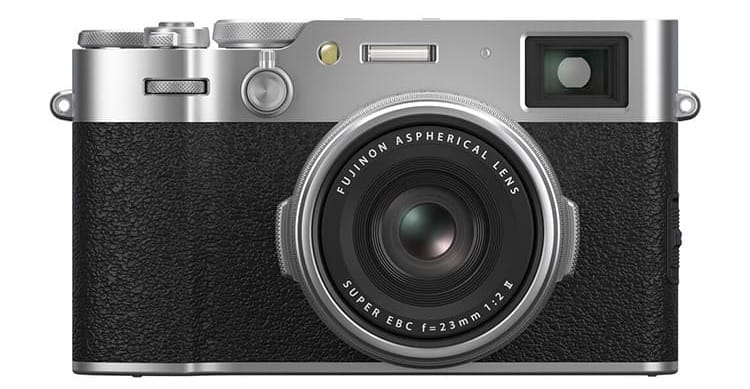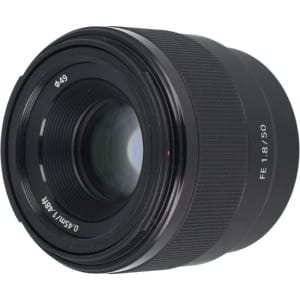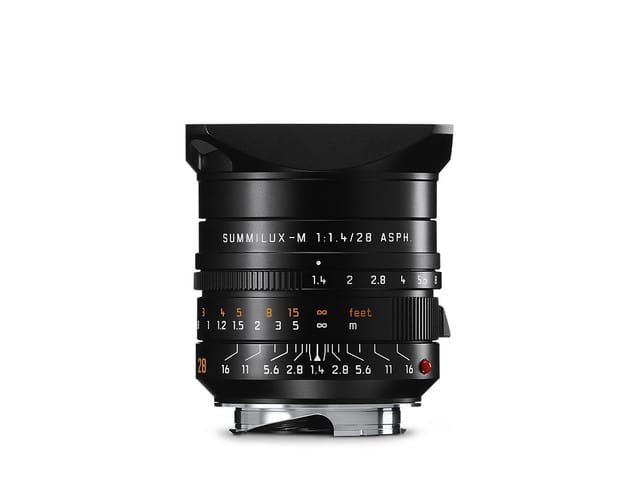Street photography is all about capturing spontaneous moments in everyday life. It’s a raw, unfiltered look at the world around us, revealing the beauty in the ordinary. To excel in this genre, the right gear can make all the difference—not because expensive equipment guarantees great photos, but because having the right tools helps you stay agile, invisible, and ready to seize that perfect moment.
In this blog, we’ll explore the essential street photography gear that can help you blend into the background while capturing powerful, candid shots. From the perfect camera body and lenses to accessories that enhance your workflow, we’ll break down the must-haves for every street photographer, whether you're a seasoned pro or just getting started. Let’s dive into the gear that can help you tell compelling stories through your lens.
Here are the main tips:
1. Choosing the Right Camera
- Compact Mirrorless vs. DSLR: Why mirrorless cameras are popular for street photography (lightweight, silent shutters).
- Recommended Cameras:
- Fujifilm X100V (or equivalent)
- Sony Alpha series
- Leica Q series
- Important Camera Features:
- Silent shooting mode
- Quick autofocus
- Discreet design

Street photography often involves spontaneous moments, candid expressions, and a constantly changing environment. Therefore, choosing the right camera is crucial for capturing these fleeting moments efficiently and discreetly. Below are detailed considerations for selecting the best camera for street photography:
Compact Mirrorless vs. DSLR: Why Mirrorless Cameras Dominate
Street photography is all about portability, discretion, and quick response times. Mirrorless cameras have become the preferred choice for street photographers due to several factors:
• Size and Weight: Mirrorless cameras are smaller and lighter than most DSLRs, making them easier to carry around all day. Their compact size makes them less intimidating to subjects and allows for greater mobility when moving through busy streets.
• Silent Shooting: Mirrorless cameras often come with a silent or electronic shutter option, allowing you to capture images without drawing attention, which is crucial for candid photography.
• Live View with Real-Time Exposure Adjustments: The electronic viewfinder (EVF) in mirrorless cameras shows you the exact exposure in real-time, allowing you to adjust settings instantly without guessing.
• Autofocus Speed: Many mirrorless systems offer advanced autofocus (AF) capabilities that are faster and more accurate, particularly in low-light situations—ideal for street photography where subjects are constantly moving.
Recommended Cameras for Street Photography
Here are some top camera options that are particularly well-suited for street photography:
• Fujifilm X100V: Known for its fixed 23mm lens (35mm full-frame equivalent), the X100V is a popular choice among street photographers. Its compact size, retro design, and leaf shutter with a nearly silent operation make it perfect for discreet shooting.
• Sony Alpha Series (A7C, A7III): Sony’s Alpha series combines high image quality, fast autofocus, and portability. The Sony A7C is especially compact for a full-frame camera, making it great for street photography.
• Leica Q2: Leica is known for its history in street photography. The Q2 features a full-frame sensor with a 28mm f/1.7 fixed lens, ideal for wide-angle street shots. The design is minimalist and unobtrusive, which appeals to photographers who want to blend into the environment.

Key Camera Features for Street Photography
When selecting a camera for street photography, there are several critical features to look out for:
Silent Shutter:
- Why It Matters: A loud shutter can alert people to your presence, potentially ruining a candid shot. Cameras with silent or electronic shutters allow you to photograph discreetly without drawing attention to yourself.
- Cameras with Silent Shutter Options: Fujifilm X100V, Sony A7C, and Canon EOS R series.
Fast Autofocus:
- Why It Matters: In street photography, subjects move quickly, and moments happen in an instant. A fast and accurate autofocus system is crucial for capturing sharp images of moving subjects.
- Autofocus Technology: Look for cameras with features like phase-detection AF, face and eye detection, and real-time tracking, all of which help to lock focus quickly on moving subjects.
Compact and Discreet Design
- Why It Matters: The smaller and more discreet your camera, the less noticeable you’ll be in crowded or busy environments. Street photography often involves blending into the surroundings, so a large, bulky DSLR can be distracting and intimidating.
- Examples of Compact Cameras: Sony A7C, Ricoh GR III, Leica Q2.
Good ISO Performance:
- Why It Matters: Street photographers frequently shoot in varying light conditions—from bright daylight to low-light evening scenes. A camera with good high-ISO performance allows you to capture clean images without too much noise, even when the light is low.
- Cameras Known for ISO Performance: Sony A7III, Fujifilm X-T5, Nikon Z6II.
Fast Burst Mode:
- Why It Matters: Capturing a series of frames in quick succession can help you get the perfect shot of a moving subject. A fast burst mode ensures you don’t miss key moments, especially in action-heavy environments like busy markets or fast-paced urban settings.
- Cameras with Fast Burst Speeds: Canon EOS R6 (up to 20 fps), Sony A9 II (up to 20 fps), Fujifilm X-T5 (up to 15 fps mechanical).
In-Body Image Stabilization (IBIS):
- Why It Matters: IBIS helps reduce camera shake, which is particularly useful when shooting handheld in low-light situations or while moving. This ensures sharper images without the need for a tripod.
- Cameras with IBIS: Nikon Z6II, Sony A7III, Canon EOS R6.
By understanding the importance of factors like silent shooting, portability, fast autofocus, and ISO performance, street photographers can make informed choices on selecting the ideal camera that balances both technical features and usability for their needs.
2. Lenses for Street Photography

- Prime vs. Zoom Lenses: Advantages of prime lenses (speed, sharpness) vs. zoom lenses (flexibility).
- Best Focal Lengths for Street Photography:
- 35mm: Classic for street scenes.
- 50mm: Natural perspective, good for portraits.
- 28mm: Wider field of view for tight spaces.
- Top Lens Recommendations:
- Canon 35mm f/1.8 or equivalent
- Sony 50mm f/1.8 or equivalent
- Leica 28mm Summilux
The choice of lens is as critical as the camera in street photography. Lenses determine your field of view, how much of the environment you can capture, and the overall aesthetic of your photos. In street photography, the right lens helps you capture spontaneous moments, tell stories, and convey emotions through candid expressions. Let’s explore the key considerations and options for lenses in street photography.
Prime vs. Zoom Lenses: Which is Better for Street Photography?
Prime Lenses:
-
What They Are: Prime lenses have a fixed focal length, meaning you can't zoom in or out. You physically move closer or farther away from your subject to change the framing.
-
Why They Work for Street Photography: Prime lenses are known for their simplicity, speed, and sharpness. They are typically faster, offering wider apertures (f/1.4, f/1.8), which makes them ideal for low-light conditions and creating a beautiful bokeh (blurred background).
Benefits: -
Image Quality: Prime lenses usually provide sharper images with less distortion.
-
Compact Size: Because they have fewer internal moving parts, they are smaller and lighter, making them easy to carry around for hours.
-
Wider Apertures: Prime lenses can achieve very wide apertures (e.g., f/1.4, f/1.8), which allows for better performance in low-light and more creative depth-of-field control.
-
Encourages Creativity: By limiting your zooming options, prime lenses encourage you to move physically and think more creatively about framing your shots.

Zoom Lenses: -
What They Are: Zoom lenses have a variable focal length, allowing you to zoom in and out without changing your position.
-
Why They Can Work for Street Photography: Zoom lenses offer flexibility, allowing you to adjust the framing of a scene without moving closer or farther away from your subject.
Benefits: -
Versatility: A zoom lens allows you to cover different focal lengths without changing lenses, making it more adaptable in situations where you can’t physically move closer to your subject.
-
Good for Changing Environments: In fast-paced environments like crowded streets, a zoom lens can be useful when you need to quickly capture a variety of compositions without losing time switching lenses.
Drawbacks: -
Size and Weight: Zoom lenses tend to be larger and heavier, making them less ideal for photographers who want to remain inconspicuous.
-
Narrower Apertures: Most zoom lenses don’t offer the same wide apertures as primes, which limits their ability to create strong bokeh or perform in low light.
Best Focal Lengths for Street Photography
Choosing the right focal length is critical because it determines how you frame your scene, what elements are included, and how much attention is given to your subject. Here are some common focal lengths used in street photography:
1. 35mm (Full-Frame Equivalent):
- Why It Works: The 35mm focal length is often considered the "classic" street photography lens. It provides a natural perspective that is wide enough to capture the context of a scene, but not so wide that it distorts the image.
- Ideal Use: Perfect for capturing environmental portraits, street scenes, and candid moments where the surrounding environment is an important part of the story.
Benefits: - Close to the human eye’s field of view, creating natural-looking images.
- Offers a good balance between capturing subjects and the context around them.
Example Lenses: - Canon RF 35mm f/1.8: A compact, fast, and affordable lens that is great for street photography.
- Sony 35mm f/1.8: A lightweight and sharp lens with good low-light performance.
2. 50mm (Full-Frame Equivalent):
- Why It Works: The 50mm lens is slightly more "zoomed in" compared to 35mm, offering a tighter perspective that isolates your subject more while still maintaining a natural look.
- Ideal Use: Great for capturing portraits or focusing on specific subjects without a lot of distortion, while still maintaining some context in the frame.
Benefits: - Provides a more intimate perspective, especially for portraits and close-up shots.
- Often referred to as the "nifty fifty" due to its versatility and sharpness.
Example Lenses:
- Nikon 50mm f/1.8: A popular and affordable lens known for its sharpness and bokeh.
- Sony 50mm f/1.8: Another great option with fast autofocus and good low-light performance.
3. 28mm (Full-Frame Equivalent):
- Why It Works: The 28mm lens gives you a slightly wider field of view than the 35mm, which is helpful for tight urban environments or when you want to capture more of the surroundings.
- Ideal Use: Perfect for street scenes with multiple elements, architecture, or when you want to show more of the environment around your subject.
Benefits:
- Allows you to include more context in the frame without extreme wide-angle distortion.
- Ideal for tight spaces, such as crowded streets or markets.
Example Lenses:
- Leica 28mm f/1.7 Summilux: A premium, fast lens known for excellent image quality.
- Fujifilm XF 18mm f/2 R: A compact lens that offers a 28mm full-frame equivalent on APS-C cameras, great for street photographers using Fujifilm.
4. 24mm or Wider (Full-Frame Equivalent):
- Why It Works: Wider lenses, like 24mm or even 20mm, can give an exaggerated sense of space and perspective, making them great for immersive street photography, especially in dense urban areas or architectural shots.
- Ideal Use: For capturing expansive scenes, large crowds, or dramatic architecture.
- Drawbacks: These lenses can introduce distortion at the edges of the frame, which can be an issue if not handled carefully.
Example Lenses:
- Canon RF 24mm f/1.4: A fast, wide lens ideal for capturing large scenes.
- Sigma 24mm f/1.4 DG HSM: A well-regarded wide-angle lens known for its sharpness and bokeh.
Top Lens Recommendations for Street Photography
35mm f/1.8 or f/2: This lens is a go-to for many street photographers because it balances wide enough coverage for the environment while being close enough for intimate shots.
Examples:
- Canon RF 35mm f/1.8
- Sony 35mm f/1.8
- Nikon Z 35mm f/1.8
50mm f/1.8: Known as the "nifty fifty," this lens provides a natural perspective, ideal for portraits and isolating subjects within street environments.
Examples:
- Sony FE 50mm f/1.8
- Nikon 50mm f/1.8G
- Canon RF 50mm f/1.8 STM
28mm f/2: For photographers who prefer wider shots and want to capture more of the scene, the 28mm focal length is a great choice.
Examples:
- Leica 28mm f/1.7 Summilux
- Canon RF 28mm f/2.8
Considerations for Choosing the Right Lens
- Aperture Size: For street photography, you’ll often want a lens with a wide aperture (f/1.4 to f/2.8) to allow for better low-light performance and the ability to create shallow depth of field (blurred background). This helps focus the viewer’s attention on the subject.
- Weight and Size: Street photography is often about mobility. Choose a lens that’s lightweight and easy to carry around for extended periods.
- Focusing Speed: Fast autofocus is critical for capturing fleeting moments on the streets. Look for lenses with quick and reliable autofocus systems, particularly those with silent focusing motors to stay discreet.
3. Street Photography Accessories
- Compact Tripods/Monopods: When to use (for low-light or long exposures).
- Camera Straps: Importance of a comfortable and discreet strap.
- Crossbody or wrist straps.
- Camera Bag: Small, lightweight bags for quick access and ease of movement.
- Lens Filters: UV or polarizing filters to manage lighting conditions.
- Extra Batteries and Memory Cards: Always have backups for extended shooting.
4. Discreetness and Portability
- Keeping a Low Profile: Why staying unnoticed helps in capturing candid moments.
- Compact and Lightweight Gear: Benefits of carrying minimal equipment.
- Minimalist Approach: Limiting gear to avoid distractions and focus on moments.
5. Street Photography in Low Light
- Low-Light Gear: Cameras with good ISO performance for nighttime or dim street scenes.
- Lens Choices: Fast lenses (f/1.4, f/1.8) for low-light conditions.
- Recommended Accessories: Small LED lights for creative night shots.
6. Smartphone as a Backup Camera
- Benefits of Using Smartphones: The latest smartphones with great photography capabilities.
- Key Features to Consider: Portrait mode, wide-angle lenses, high ISO capabilities.
- Recommended Apps for Street Photographers: Apps like Lightroom Mobile for editing on the go.
7. Additional Tools for Editing
- Editing Software: Post-processing essentials for street photography.
- Adobe Lightroom, Capture One.
- Presets and Filters: Using presets for consistency in color grading.
- Mobile Editing Apps: Quick editing tools for social media sharing.
Conclusion
While creativity and a keen eye for detail are the true foundations of street photography, having the right gear ensures you're always ready to capture the essence of urban life. From a compact and discreet camera to versatile lenses and essential accessories, your gear can be the difference between missing or nailing that once-in-a-lifetime shot. However, remember that it’s not the equipment that makes a great photograph—it’s how you use it.
Street photography is about being adaptable, quick, and comfortable with your tools. Invest in what works best for you, but never lose sight of the art itself. Ultimately, the best camera is the one that helps you feel confident and inspired to tell the stories unfolding around you. Happy shooting!
Thank you for visiting our site and being part of this journey with us! We rely on the generous support of visitors like you to continue providing high-quality. Your donation, no matter the size, helps us maintain the website and create more valuable resources for everyone.


